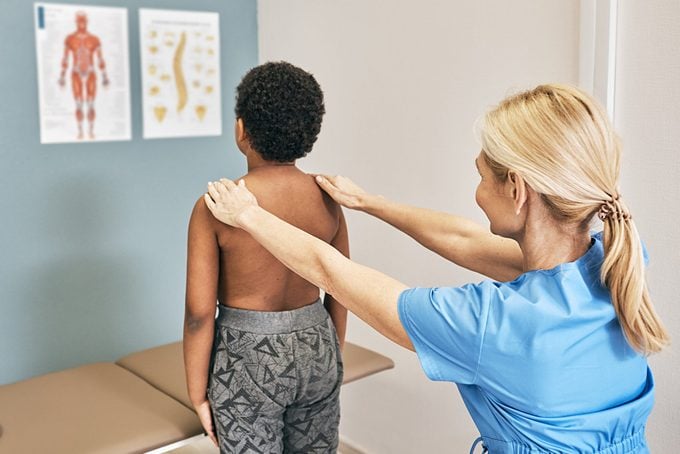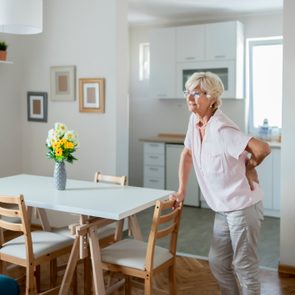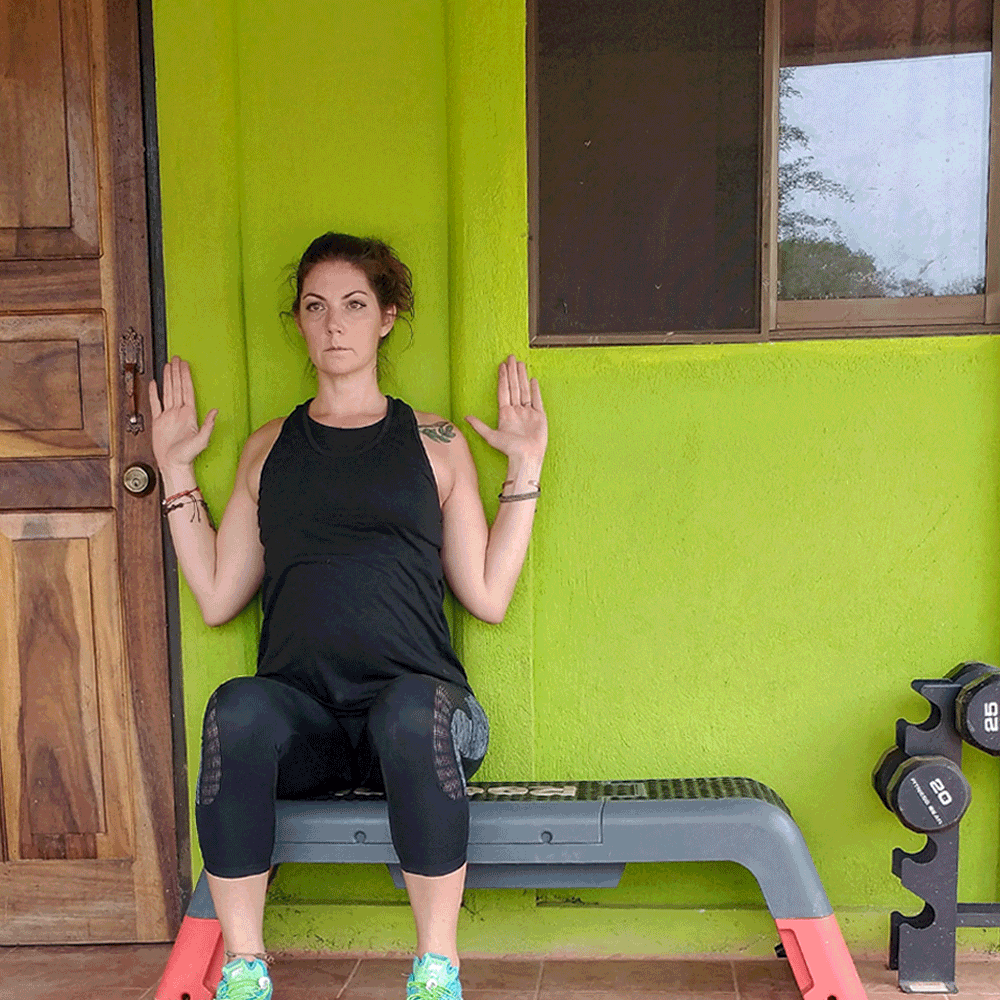Parents: Here’s What You Need to Know About Scheuermann’s Kyphosis
Updated: Jun. 11, 2021
Rounded shoulders aren't always a sign of bad posture; in some children, this can be a symptom of Scheuermann's kyphosis. Learn about this condition's causes, symptoms, and treatments.
Is it bad posture or something else?
Did your parents ever chide you for slouching in your seat? Maybe they gave you a sharp look or a nudge to straighten up in church. Or you got an earful when a family photo revealed your rounded shoulders.
It’s not uncommon to have bad posture in adolescence. But sometimes a slouch has less to do with boredom than it does your health.
Sometimes, slouching is a symptom of a condition called Scheuermann’s kyphosis.
What is Scheuermann’s kyphosis?
It’s a mouthful for sure, but the condition is named after the Danish surgeon Holger Werfel Scheuermann, who first described it in 1920.
Scheuermann’s kyphosis is a condition in which the bones of the spine in the middle of the back curve outward more than they should, occurring in about 3 percent of kids ages 10 to 15.
Sometimes, the resulting rounded back and minor back pain are noticeable; other times, they’re not.
Kids with Scheuermann’s kyphosis can’t straighten the curve by simply sitting up straight or not slouching.
Most of the time, kids outgrow this spinal abnormality when their growth cycle is complete. But for some, the curvature may get worse.
(Beware of these everyday habits damaging your spine.)
What’s happening in the spine?
Simply put, “Scheuermann’s kyphosis is a structural issue of the bone from disruption of normal growth from the growth plate,” says Walter Truong, MD, a pediatric orthopedic surgeon at Gillette Children’s Specialty Healthcare in St. Paul, Minnesota.
It’s considered a developmental type of kyphosis, a natural curvature. In other words, it’s a natural curve of the spine that develops while a child is still growing.
The vertebrae (small bones) in our spine are shaped like rectangles and stacked like bricks with flexible cartilage in between.
When a child has Scheuermann’s, the front edge of some of the vertebrae in the upper back grows slower than the back edge, creating wedge-shaped vertebrae.
So instead of the vertebrae stacking like bricks, they form a curve, rounding the back.
We all have a slight curvature in our spine, but it’s considered excessive when the curve increases to more than 45 degrees.
What causes Scheuermann’s kyphosis?
Contrary to popular belief, Scheuermann’s kyphosis isn’t caused by poor posture, slouching, or heavy bags and backpacks.
Scientists believe it stems from an interaction between hereditary and environmental factors.
Doctors have observed that Scheuermann’s kyphosis has a strong genetic component and is more prevalent in boys.
“Parents also note uncles or grandfathers who had the same thing when they were young, and how it became worse with age,” says John M. Flynn, MD, a pediatric orthopedic surgeon and chief of the division of orthopedics at Children’s Hospital of Philadelphia.
(Try these chest stretches to improve your posture.)
Signs and symptoms
Slouching naturally creates a more rounded back, but in Scheuermann’s kyphosis, the curve is rigid and limited to a shorter distance in the middle of the back.
“It’s almost like a dorsal fin or knuckle and can seem to come out of nowhere during the adolescent growth spurt,” says Dr. Truong. Some people experience minor back pain in the curved area.
The body may try to compensate for the curve in the upper back, leading some people to develop an increased curve in the lower back (called hyperlordosis).
Here are some other common signs and symptoms:
- Patients may feel like they can’t stand up straight or feel off balance from their head and torso constantly shifting forward
- Tight hamstrings
- Loss of flexibility
- Slouching or posture that gets worse over time

How is Scheuermann’s kyphosis diagnosed?
Scheuermann’s kyphosis might be found during a routine check-up by a pediatrician, but more often than not, it’s a parent or caregiver who notices something is amiss in the child’s back, usually just before or during the middle school years.
“They notice the bump on their teen’s back, the bad posture, etc., and either ask the pediatrician for a referral or schedule directly with a pediatric spine specialist,” says Dr. Flynn.
Tests used to diagnose Scheuermann’s kyphosis often include an X-ray taken from the side. This can help determine if the vertebrae are wedged together.
Your doctor also may order an MRI or CT scan. These provide detailed images of affected vertebrae, the surrounding tissues, and the spinal cord, all places where nerve or spinal cord compression may be present.
If imaging tests reveal that three or more vertebrae in a row are wedged together at least five degrees each, and if the spine is curved 50 degrees or more, your doctor will make a diagnosis of Scheuermann’s kyphosis.
(Kyphosis vs. lordosis: here’s the difference.)
How is Scheuermann’s kyphosis treated?
Treatment varies depending on the degree of the curve, a person’s age, and the progression of the curve.
Reassuringly, the vast majority of adolescents stabilize at the end of their growth cycle with a curvature of less than 55 degrees and require no treatment, Dr. Truong says.
It’s a good idea for kids with Scheuermann’s kyphosis to visit a pediatric spine expert one to two times per year. There, they can get proper low-radiation X-rays to monitor the condition, says Dr. Flynn.
Non-steroidal anti-inflammatory drugs (NSAIDs) help relieve back pain, and physical therapy may help relieve pain and improve function.
Back brace
While Scheuermann’s kyphosis doesn’t pose long-term health concerns for most kids, undiagnosed and untreated Scheuermann’s kyphosis in a growing child may lead to a progressive abnormality of the spine.
Other issues include increased back pain, and neurologic deficits, which may cause nerve problems, walking, and balance issues, or arm and leg weakness.
Bracing can help slow the progression of the condition. A back brace is meant to nudge the spine to lead backward and promote an anti-kyphotic (aka not rounded) posture.
“Between 55 and 80 degrees, a brace can be used if the child is still growing,” says Dr. Truong. That last part is the key. Yes, braces really only work when a child has more growing left to do.
In theory, bracing works—if the child wears it. “Very few teens can tolerate the brace, which is much harder to wear than a scoliosis brace and less effective,” says Dr. Flynn.
You can’t blame kids for not being enthusiastic about wearing one. The brace is essentially a plastic plate that pushes on the child’s chest just below the neck and is usually worn for several hours a day.
Bottom line: bracing can help, but improvement isn’t guaranteed. “There are patients who improve with brace treatment, but many will either stabilize or worsen,” says Dr. Truong.
Surgery
For people with persistent pain and increased curvature, surgery may help improve spine alignment.
A doctor might also recommend it if pressure on the spinal cord restricts function or damages nerves. But those aren’t common scenarios.
“It is rare that surgery is recommended, but if curves get over about 75 to 80 degrees in the upper back—or over 65 degrees in the mid-back—near or after the end of spine growth, surgery is an option,” says Dr. Truong.
The process comes with pros and cons. On the one hand, surgery is safe and effective. And it’ll last kids the rest of their lives.
On the other hand, it takes away some motion. And like any major surgery, it comes with risks, Dr. Truong adds.
Aging with Scheuermann’s kyphosis
For the vast majority of adolescents, the progression of curvature slows down. But most spines affected by Scheuermann’s kyphosis will continue to curve a little bit throughout adulthood, Dr. Truong says.
Actually, as part of the natural aging process, we all experience some degree of curvature. Yet back pain in adulthood might inevitable for some who had higher degrees of curvature.
“Patients with curves greater than 80 degrees in the upper thoracic area [upper mid back] and those over 65 degrees in the thoracolumbar area [mid to low back] tend to have more pain in the upper and lower back than the average population,” says Dr. Truong.
Stretching, physical therapy, and NSAIDs help reduce pain, but adults may opt for a brace.
“In adults, intermittent bracing and therapy can be used for comfort and reducing pain and returning to activities,” says Dr. Truong.
Additionally, about 20 to 30 percent of people with this condition also have mild scoliosis, in which the spine rotates and forms a side-to-side curve. Usually, mild scoliosis doesn’t require any treatment.
Nevertheless, monitoring Scheuermann’s kyphosis and scoliosis is essential to staying ahead of the curve.
“When severe and progressive, it can lead to long-term issues with worsening deformity, pain, and even breathing issues,” says Dr. Flynn.
And as with any medical condition, the more severe your case, the more issues you may run into down the line.
“Kyphosis over 100 degrees has been shown to cause some restrictive lung disease, and in a small number of patients, neurologic complications have been described at these high magnitudes of deformity,” says Dr. Truong.
Living with Scheuermann’s kyphosis
It might be surprising, but unless they’re in pain, there is no structural reason for children with Scheuermann’s kyphosis to sit on the sidelines and miss out on sports or playtime, Dr. Truong says.
Only in rare cases will Scheuermann’s kyphosis be severe and aggressive enough to affect daily activities. These kids may need to limit or avoid certain sports or physical activities, but it depends on the individual.
Still, some children might feel self-conscious about their rounded back and have poor body image.
If your child struggles with anxiety or poor body image, seek a mental health professional specializing in adolescent issues.
















